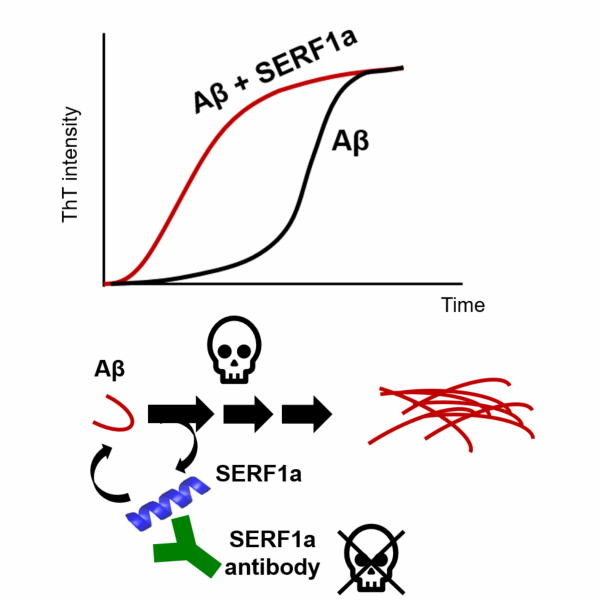Alzheimer’s disease (AD) is a devastating, progressive neurodegenerative disease affecting the elderly in the world. The pathological hallmark senile plaques are mainly composed of amyloid-β (Aβ), in which the main isoforms are Aβ40 and Aβ42. Aβ is prone to aggregate and ultimately forms amyloid fibrils in the brains of AD patients. Factors that alter the Aβ aggregation process have been considered to be potential targets for treatments of AD. Modifier of aggregation 4 (MOAG-4)/small EDRK-rich factor (SERF) was previously selected from a chemical mutagenesis screen and identified as an amyloid modifier that promotes amyloid aggregation for α-synuclein, huntingtin, and Aβ40. The interaction and effect of yeast ScSERF on Aβ40 were previously described. Here, we examined the human SERF1a effect on Aβ40 and Aβ42 fibrillization by the Thioflavin T assay and found that SERF1a accelerated Aβ fibrillization in a dose-dependent manner without changing the fibril amount and without incorporation. By Fourier transform infrared spectroscopy (FTIR) and transmission electron microscopy (TEM), we found that SERF1a altered the secondary structures and the morphology of Aβ fibrils. The electrospray ionization mass spectrometry (ESI-MS) and analytical ultracentrifugation (AUC) results showed that SERF1a binds to Aβ in a 1:1 stoichiometry. Moreover, the NMR study showed that SERF1a interacts with Aβ via its N-terminal region. Cytotoxicity assay demonstrated that SERF1a enhanced toxicity of Aβ intermediates, and the effect can be rescued by SERF1a antibody. Overall, our study provides the underlying molecular mechanism for the SERF1a effect on Aβ fibrillization and facilitates the therapeutic development of AD.
